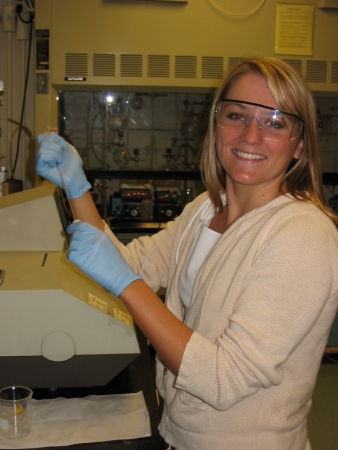
School:
Grade Level:
Teaching Position:
Supervisor:
Department:
Mentor:
Research Project Year:
Research Project Title:
Research Project Description:
Polypeptides are interesting polymers because their structural complexity imparts these materials with specific biological functions. Side reactions that occur during formation of the polypeptide segments have been a major limitation in the synthesis. Our results demonstrated that amido-amidate nickelacycle end groups can be incorporated onto 2,2-dimethyl-1,3-propanediamine, and the resulting complexes can be used as difunctional initiator for polymerization of ã-benzyl glutamate NCA (Glu NCA).
To prove difunctionality of the initiator we chose to compare the rates of GluNCA polymerization using mono- and difunctional initiators. All rate constants were measured at identical concentrations of the initiator = 1.2 10-3 M and [GluNCA] = 0.13 M. The monomer reactivity ratios were determined and found to be kobs = (5.7±0.5) 10-4 sec-1 for difunctional initiator and kobs = (2.0±0.5) 10-4 sec-1 for monofunctional initiator. The polymerization rates were first-order in monomer concentration to 3.5 half-lives, which indicated the lack of significant chain termination events. Polymerization exhibited features characteristic of living polymerizations. Polypeptide chain length scaled linearly with monomer to initiator ratio while molecular weight distributions were low (Mw/Mn < 1.3).
Research Project Attachments:
| Attachment | Size |
|---|---|
| 183.02 KB |
